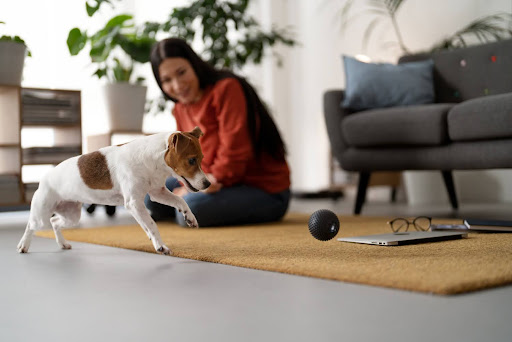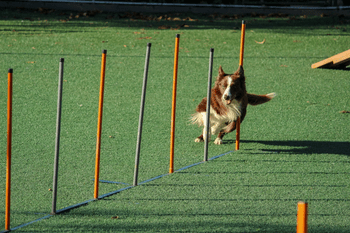Contents
Welcome to the exciting journey of puppy parenthood! Bringing home a new furry friend is a joyful experience, but it also comes with its own set of challenges, especially when it comes to understanding and managing your puppy’s behaviour.
In this guide, we’ll walk you through the common behaviours you might encounter and offer practical tips for puppy behaviour training to foster a strong bond with your new canine companion.
Common Puppy Behaviors Explained
As a new puppy owner, you’re likely to encounter a range of behaviours that may seem puzzling or frustrating initially. Understanding the reasons behind these behaviours can help you address them effectively.
-
Chewing and Mouthing
Puppies explore the world with their mouths, and chewing is a natural behaviour for them. During teething, puppies may experience discomfort, leading them to chew on objects to alleviate pain and loosen baby teeth.
-
Biting and Nipping
Puppies use their mouths to play and communicate, but they may not understand that their sharp teeth can cause pain. Teaching bite inhibition is crucial during puppyhood to prevent nipping from turning into aggressive biting later on.
-
House Training Challenges
Accidents are a natural part of house training, especially during the early stages of puppyhood when bladder control is still developing. Establishing a consistent routine of regular potty breaks, feeding times, and praise for going outside can help speed up the house training process.
-
Excessive Barking
Barking is a form of communication for puppies, but excessive barking can be a nuisance for owners and neighbours alike. Understanding the reasons behind your puppy’s barking can help you address the underlying cause. Some common reasons include boredom, frustration, fear, or excitement.
Building a Strong Relationship with Your Puppy
Bonding with your puppy is essential for building trust and mutual respect. Some key elements of fostering a strong relationship with your furry friend are:
-
Positive Reinforcement Training
Using rewards-based training methods, such as treats, praise, and play, can help reinforce desirable behaviours and strengthen the bond between you and your puppy. Consistency, patience, and a positive attitude are essential for successful training sessions.
-
Socialization and Exposure
Introducing your puppy to different people, animals, environments, and experiences helps them feel confident and secure in various situations. Start socialization early and expose your puppy to a wide range of stimuli in a safe and controlled manner.
-
Providing Mental and Physical Stimulation
Puppies have lots of energy and curiosity, so it’s essential to provide them with plenty of opportunities for mental and physical exercise. Engage your puppy in interactive games, training sessions, and outdoor activities to keep them mentally and physically stimulated.
Understanding Behavioral Problem
While most puppy behaviours are normal and manageable with proper training and guidance, some may indicate underlying issues that require attention.
-
Separation Anxiety
Puppies are social creatures and may experience anxiety when left alone for extended periods. Signs of separation anxiety include excessive barking, destructive behaviour, and house soiling.
To prevent separation anxiety, gradually acclimate your puppy to being alone by starting with short absences and gradually increasing the duration. Provide comfort items, such as toys and blankets, and create a safe and comfortable space for your puppy to relax while you’re away.
-
Fear and Aggression
Fear and aggression can stem from a lack of socialization, past trauma, or genetic predisposition. Signs of fear and aggression include growling, snapping, and avoidance behaviour.
If your puppy displays fear or aggression, seek guidance from a professional dog trainer or behaviourist who can help you address the underlying cause and implement appropriate management and training techniques.
-
Resource Guarding
Resource guarding is a natural behaviour in dogs, but it can become problematic if not addressed early on. Signs of resource guarding include growling, snapping, and stiff body posture when approached while eating or playing with a toy.
To prevent resource guarding, teach your puppy to associate approaching people or other animals with positive experiences, such as receiving treats or praise. Avoid punishing or forcibly taking away items from your puppy, as this can escalate guarding behaviour.
Conclusion
By learning about common behaviours and how to address behavioural problems, you can set your puppy up for success and ensure a harmonious relationship for years to come.
Remember to be patient, consistent, and compassionate in your interactions with your puppy, and enjoy the journey of watching them grow and learn alongside you.
And if you’re searching for services that offer reactive dog training in Toronto, visit K9 Academy.




![Protocols of Dance Classes A Dancer Must Follow [Dos and Don’ts] Protocols of Dance Classes A Dancer Must Follow [Dos and Don’ts]](https://publicmags.com/wp-content/uploads/2024/01/Protocols-of-Dance-Classes-A-Dancer-Must-Follow-Dos-and-Donts-1.png)